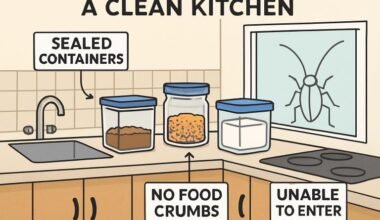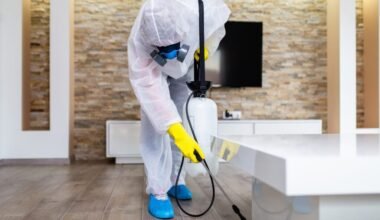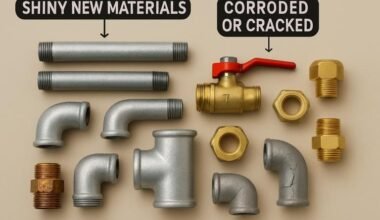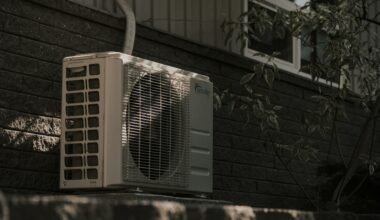Every home depends on key systems, heating, cooling, plumbing, electrical, and even roofing, to run smoothly day after day. When these systems work well, you hardly notice them. But when they start to fail, the consequences can range from uncomfortable to dangerous. Unfortunately, many homeowners tend to ignore early warning signs until the problem becomes a costly or even hazardous emergency.
The good news is that by learning to spot the early signs of trouble, you can address small issues before they grow into bigger ones. It not only saves money but also keeps your home safe and comfortable. Paying attention to sounds, smells, and changes in how your systems work can make a huge difference. One of the most important areas to start with is your heating system, since it plays a direct role in both safety and comfort during colder months.
Furnace Red Flags You Should Never Ignore
Your furnace does more than provide heat. It safeguards both your comfort and your safety during the colder months. When it starts to malfunction, however, the risks can become serious. Spotting small changes early is the key to preventing costly or dangerous problems. So if you’ve noticed unusual odors or unexplained symptoms, it’s worth asking one critical question: Is your furnace leaking gas? It is one of the most critical questions to ask because even a small leak can lead to dangerous health risks and should never be ignored.
Some of the warning signs include a strong sulfur or rotten egg smell, hissing sounds near the furnace, or physical symptoms such as dizziness, nausea, or frequent headaches. Another red flag is a pilot light that burns yellow instead of blue, which can indicate improper combustion. If you notice any of these issues, you should take action immediately by leaving the area and contacting professionals.
Being proactive about furnace issues doesn’t just keep your home warm. It can prevent a life-threatening situation. Paying attention to these signs allows you to keep your home safe while ensuring your heating system continues working efficiently throughout the season.
Electrical Issues That Signal Trouble
Electricity powers nearly everything in your home, from appliances to lights to entertainment systems. Because it’s such a central part of your daily life, electrical problems can be disruptive and dangerous if not addressed quickly.
Flickering lights, frequently tripped breakers, or outlets that feel warm to the touch are clear signs that something isn’t right. You might also notice a burning smell near switches or see sparks when plugging in devices. While it may be tempting to ignore small issues or assume they’ll go away, electrical malfunctions can quickly escalate into fire hazards.
Calling in an electrician to inspect and repair the system at the first sign of trouble is the best way to prevent risks. Routine inspections can also help uncover hidden issues before they become dangerous, giving you peace of mind that your electrical system is safe and reliable.
Plumbing Problems That Can’t Wait
Plumbing failures are another major concern for homeowners because they can cause extensive damage in a short amount of time. Even what seems like a minor leak can lead to structural damage, mold growth, and expensive repairs.
Common signs of plumbing issues include slow drains, dripping faucets, or unexplained water stains on walls and ceilings. You might also notice an unusually high water bill, which often points to hidden leaks. Gurgling noises in pipes or the smell of mildew are also red flags.
The key is to treat these issues as urgent. Fixing small leaks quickly is far less costly than dealing with water damage or mold remediation later. Keeping your plumbing system in good shape protects both the structure of your home and your indoor air quality.
HVAC Systems and Efficiency Concerns
Your heating and cooling system does more than regulate temperature. It plays a big role in your overall wellness. When the system isn’t working properly, you may feel uncomfortable in your own home and see higher energy bills.
Signs that your HVAC system may be struggling include weak airflow, inconsistent temperatures from room to room, unusual noises, or a musty smell when the system runs. Rising energy costs without an increase in usage are another clue that the system is no longer efficient.
Scheduling regular maintenance, such as cleaning filters and inspecting components, keeps the system running smoothly. When you spot early warning signs, addressing them quickly helps you avoid a complete breakdown and ensures your home stays comfortable year-round.
Roofing and Structural Signs to Watch For
Your roof and home structure are your first line of defense against the elements. Ignoring warning signs here can lead to costly repairs and compromise the safety of your home.
Watch for missing or curling shingles, leaks after rain, or sagging areas on the roof. Indoors, cracks in walls or ceilings, doors that suddenly stick, or uneven floors can point to structural issues. These signs may start small, but they often signal bigger problems that can worsen if left untreated.
Seasonal inspections by professionals can help you catch roof and structural issues before they escalate. A little preventive care goes a long way in protecting your home’s integrity and your family’s safety.
Balancing Prevention with Action
One of the most effective ways to avoid home system failures is to balance prevention with timely action. Preventive maintenance, like annual inspections for your furnace, plumbing checkups, and regular roof assessments, helps extend the life of your systems. But equally important is acting quickly when you notice early warning signs.
Ignoring small problems almost always leads to bigger and more expensive ones. By staying proactive, you protect your investment, avoid unnecessary stress, and keep your home functioning at its best. Think of it as treating your house like a long-term investment: the more attention you give to maintenance, the more reliable and comfortable your living space will be.
Every home system, from the furnace to the roof, plays a role in your comfort and safety. The challenge is that these systems often show subtle warning signs before they fail. Learning to recognize those signs can save you from unexpected costs, health risks, and emergencies.
Whether it’s questioning unusual furnace behavior, noticing flickering lights, or spotting water stains on the ceiling, your attention matters, acting early allows you to solve problems before they escalate, giving you peace of mind that your home is safe and well-maintained.
By staying alert and proactive, you can keep your home running smoothly, protect your family, and ensure your living space remains a secure and comfortable place for years to come.






